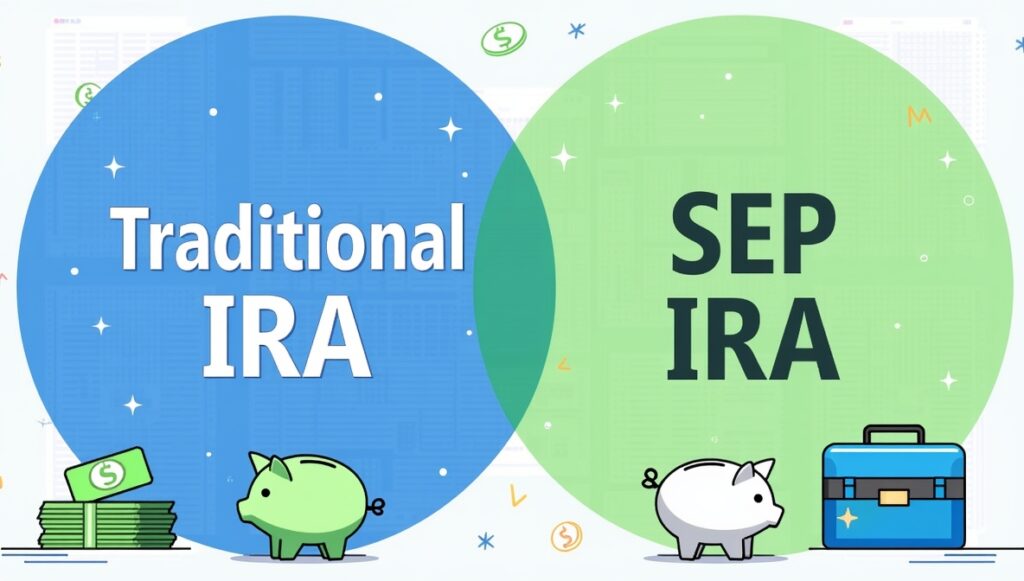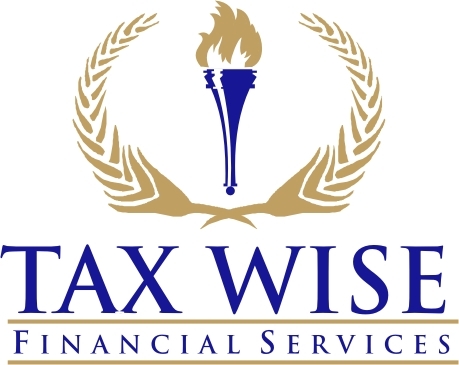
Saving for retirement is one of the most important financial steps anyone can take. For people who are self-employed or run small businesses, choosing the right retirement account can make a big difference. Two popular options are the Traditional IRA and the SEP IRA. Both accounts can help you lower your tax bill, grow your savings, and build a more secure future. But they work in different ways, and it’s important to know which one fits your situation best.
This article will explain the basics of each account, compare their tax advantages, and help you understand how to use them as part of your tax saving investments in 2025.
What Is a Traditional IRA?
A Traditional IRA, or Individual Retirement Account, is a personal savings account designed for retirement. Anyone with earned income can open one, even if they are not self-employed. The main benefits are:
- Tax deduction on contributions: The money you put into a Traditional IRA may be deducted from your taxable income. For example, if you earn $60,000 a year and contribute $6,000 to your IRA, you may only be taxed on $54,000.
- Tax-deferred growth: Investments inside the account grow without being taxed until you withdraw them in retirement.
- Wide choice of investments: You can invest in stocks, bonds, mutual funds, or other financial products, giving you flexibility in building your retirement plan.
In 2025, the contribution limit for a Traditional IRA is relatively low compared to other retirement accounts. Most people can put in around $6,500 per year (with an extra $1,000 if you’re over 50).
What Is a SEP IRA?
A SEP IRA, or Simplified Employee Pension IRA, is designed for people who are self-employed or who own small businesses. It is different from a Traditional IRA in a few key ways:
- Much higher contribution limits: In 2025, you can contribute up to 25% of your income, with a maximum contribution around $66,000. This is far more than a Traditional IRA.
- Employer-funded: If you own a business, you make contributions for yourself and any eligible employees. Contributions are based on a percentage of each person’s income.
- Simple to set up: As the name suggests, SEP IRAs are easier to create and manage than more complex retirement plans like a 401(k).
Like the Traditional IRA, a SEP IRA also offers tax-deferred growth and the chance to reduce taxable income.
Which Retirement Account Provides Better Tax Savings for the Self-Employed?
When deciding between a Traditional IRA vs. SEP IRA for tax savings with tax saving investments, the best choice often depends on how much money you earn and how much you want to save.
If You Have a Lower Income
A Traditional IRA may be a better choice if you earn less and only want to save a smaller amount each year. The contribution limits are lower, but the account is easy to manage. For many self-employed workers just starting out, this is a simple way to lower taxes and begin building retirement savings.
If You Have a Higher Income
A SEP IRA is usually better for self-employed people who make more money and want to save larger amounts. Since you can contribute up to 25% of your income, you can shelter a much bigger part of your earnings from taxes. For example, if you earn $100,000, you could contribute $25,000 into a SEP IRA. That’s a huge tax deduction compared to the $6,500 limit in a Traditional IRA.
Thinking About Employees
If you’re a solo worker with no employees, a SEP IRA can be a powerful tool. But if you have workers, you must contribute the same percentage for them as you do for yourself. For example, if you put 20% of your pay into your account, you also need to give 20% of each employee’s pay into their SEP IRA. That can get expensive. In that case, a Traditional IRA may be easier.
Tax Saving Investments: How They Work in Both Accounts
Both the Traditional IRA and SEP IRA allow you to choose from many types of tax saving investments. The goal is to grow your money without paying taxes until retirement. Some common options include:
- Index funds: These track the stock market and can provide steady growth over time.
- Bonds: These are safer, interest-earning investments that can balance risk.
- Target-date funds: These automatically adjust investments as you get closer to retirement age.
The big advantage is that all earnings; whether from interest, dividends, or capital gains, stay inside the account without being taxed each year. This tax-deferred growth is one of the best reasons to use retirement accounts as part of your tax-saving investment plan.
Withdrawal Rules and Penalties
Another key factor in the Traditional IRA vs. SEP IRA debate is how money is taken out.
- Before age 59½: Withdrawals usually come with a 10% penalty, plus income taxes.
- After age 59½: You can take money out without penalties, but you will still pay normal income taxes.
- Required Minimum Distributions (RMDs): Both accounts require you to start taking money out at a certain age (currently 73 in 2025).
This means both accounts are great for long-term savings, but not ideal if you need money right away.
Pros and Cons of Each Option
Traditional IRA Pros
- Easy to set up
- Available to anyone with earned income
- Tax deduction available (depending on income level)
- Wide range of investment choices
Traditional IRA Cons
- Low annual contribution limits
- Income limits can reduce or remove tax deduction benefits
SEP IRA Pros
- Very high contribution limits (up to $66,000 in 2025)
- Simple setup for self-employed individuals
- Great tax deductions for high earners
SEP IRA Cons
- Must contribute equally for employees, which can be costly
- Only the employer can contribute (employees cannot add their own money)
Making the Right Choice in 2025
The decision between a Traditional IRA vs. SEP IRA for tax savings with tax saving investments comes down to your personal situation:
- If you’re just starting out, have a lower income, or prefer simplicity, the Traditional IRA may be the right fit.
- If you earn more, want to save a bigger chunk of income, or run your own business without employees, the SEP IRA may offer better tax advantages.
Many self-employed workers actually use both accounts at different times in their career. You might start with a Traditional IRA and later switch to a SEP IRA as your income grows.
Final Thoughts
Choosing the right retirement account is one of the smartest financial moves you can make in 2025. Both the Traditional IRA and the SEP IRA can help you save on taxes and grow your retirement fund. The key is understanding how each one works and matching it to your income, business situation, and long-term goals.
By comparing the Traditional IRA vs. SEP IRA for tax savings with tax saving investments, you can make an informed choice that protects your earnings today while preparing for a comfortable tomorrow.


